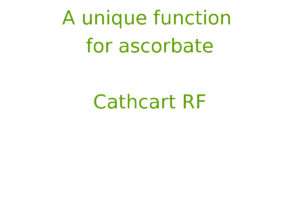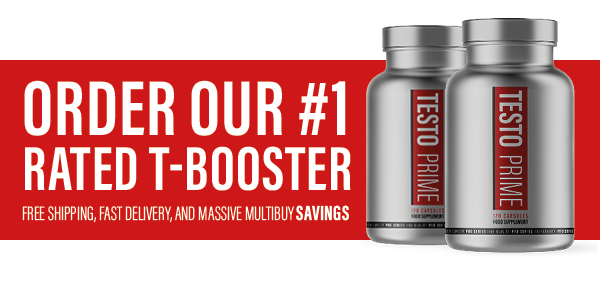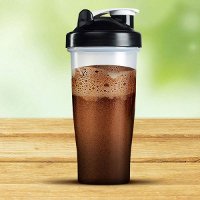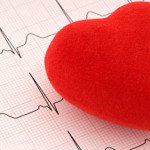Allergy, Environmental, and Orthomolecular Medicine
Vitamin C is a reducing substance, an electron donor. When vitamin C donates its two high-energy electrons to scavenge free radicals, much of the resulting dehydroascorbate is rereduced to vitamin C and therefore used repeatedly.
Conventional wisdom is correct in that only small amounts of vitamin C are necessary for this function because of its repeated use. The point missed is that the limiting part in nonenzymatic free radical scavenging is the rate at which extra high-energy electrons are provided through NADH to rereduce the vitamin C and other free radical scavengers. When ill, free radicals are formed at a rate faster than the high- energy electrons are made available. Doses of vitamin C as large as 1 to 10 grams per 24 hours do only limited good. However, when ascorbate is used in massive amounts, such as 30 to 200+ grams per 24 hours, these amounts directly provide the electrons necessary to quench the free radicals of almost any inflammation. Additionally, in high concentrations ascorbate reduces NAD(P)H and therefore can provide the high-energy electrons necessary to reduce the molecular oxygen used in the respiratory burst of phagocytes. In these functions, the ascorbate part is mostly wasted but the necessary high-energy electrons are provided in large amounts.
DEFINITION AND QUALIFICATION
In this paper, the words, vitamin C, will refer to the substance C6H6O6 used in tiny doses as a vitamin and an electron carrier. The word, ascorbate, will mean the same substance but when used in massive amounts for its high-energy electrons themselves.
This paper is not meant to be an exhaustive review of the subjects of oxidation-reduction reactions, free radical scavenging, electron-transport-chains, or oxidative phosphorylation, etc. Readers are referred to excellent texts on these subjects[1][2][3][4][5]. Many of the biochemical processes are deliberately simplified. Some intermediate steps are omitted. Certain generalizations are made so that the importance of a very simple but overlooked idea can be described in terms a non-biochemist can understand. The overlooked idea is that massive doses of ascorbate can actually be the source of high-energy electrons used in the process of free radical scavenging and not just an electron carrier used repeatedly in an electron-transport-chain resulting in free radical scavenging.
INTRODUCTION
Clinically, a few physicians have found massive doses of ascorbate to be effective in the treatment of a wide variety of diseases. It was apparent to those using ascorbate in these doses that there is some physiologic or pharmacologic action much different from what might be expected of a mere vitamin.
Nevertheless, most physicians remained critical of these treatments and remained convinced that the usefulness of ascorbate is only as vitamin C. Many had recognized that one vitamin C function is as a free radical scavenger. In this function, vitamin C donates high-energy electrons to neutralize free radicals and in the process becomes DHA (dehydroascorbate). DHA is either further metabolized, releasing more electrons, or is rereduced back to vitamin C to be used over and over again. This regeneration and repeated use of the vitamin has led to the thought that it does not take much to do its functions. Other nonenzymatic free radical scavengers such as glutathione and vitamin E function in a similar manner. The purpose of taking the nutrients making up the free radical scavengers is ordinarily to replace the small percentage inadvertently lost.
Much of the original work with large amounts of ascorbate was done by Klenner[6][7][8][9] who found that most viral diseases could be cured by intravenous sodium ascorbate in amounts up to 200 grams per 24 hours. Irwin Stone[10][11][12] pointed out the potential of ascorbate in the treatment of many diseases, the inability of humans to synthesize ascorbate, and the resultant condition hypoascorbemia. Linus Pauling[13][14][15] reviewed the literature on vitamin C, particularly its usefulness in the prevention and treatment of the common cold and the flu. Ewan Cameron in association with Pauling[16][17][18] described the usefulness of ascorbate in the treatment of cancer.
In 1970 I noted an increasing bowel tolerance to oral ascorbic acid with illness. In 1984 I wrote[19], “Based on my experience with over 11,000 patients during the past 14 years, it has been my consistent observation that the amount of ascorbic acid dissolved in water which a patient, tolerant to ascorbic acid, can ingest orally without producing diarrhea, increases considerably somewhat proportionately with the “toxicity” of his illness. A person who can tolerate orally 10 to 15 grams of ascorbic acid per 24 hours when well, might be able to tolerate 30 to 60 grams per 24 hours if he has a mild cold, 100 grams with a severe cold, 150 grams with influenza, and 200 grams per 24 hours with mononucleosis or viral pneumonia. The clinical symptoms of these diseases and other conditions previously described, are markedly ameliorated only as bowel tolerance dose levels (the amount that almost, but not quite, causes diarrhea) are approached[20][21][22][23][24][25].”
This amelioration of symptoms at a high dosage threshold combined with the knowledge that ascorbate functions as a reducing substance suggested that the beneficial effect was achieved only when the redox couple, ascorbate/dehydroascorbate, became reducing in the tissues affected by the disease. It is a characteristic of oxidation-reduction reactions that their redox potential is determined by the logarithm of the concentrations of the substances and certain constants. The logarithmic effect would explain the threshold; the redox potential would suddenly become reducing in the diseased tissues only when a large amount of ascorbate was forced into those tissues sufficient to neutralize most of the oxidized materials in those tissues[26].
FREE RADICAL SCAVENGING
Radicals are molecules that have lost an electron. When a radical escapes its normal location, it becomes a free radical. These free radicals are very reactive and will seize electrons from adjacent molecules. Inflammations whether due to infectious diseases, autoimmune diseases, allergies, trauma, surgery, burns, or toxins involve free radicals. Cells injured by free radicals will spill free radicals onto adjacent cells injuring those cells and generating more free radicals, etc. The body must confine these free radical cascades with free radical scavengers.
Some free radicals spontaneously decay and others are destroyed by enzymatic free radical scavengers such as superoxide dismutase and catalase that act on free radicals in such a way that they neutralize themselves without the addition of extra electrons. The remainder must be destroyed by the high-energy electrons carried by the nonenzymatic free radical scavengers. Free radicals that escape all the above mechanisms cause symptoms and damage.
It is helpful to remember through all the following descriptions that technically it is the high-energy electron that is neutralizing the free radical, not the free radical scavenger. The free radical scavenger carries the high-energy electron that does the neutralizing.
HIGH-ENERGY ELECTRONS THE LIMITING FACTOR
The energy of the electrons which neutralize free radicals comes ultimately, like all energy used by living things on Earth, from the Sun. Plants store this energy by photosynthesis in carbohydrates, fats, and proteins which are then eaten by animals. As animals metabolize these substances, this energy is past from one molecule to another in the form of high-energy electrons which often, but not always, are in association with hydrogens. Together with a high-energy electron, one such hydrogen can be called a hydride anion.
As glucose is metabolized, NAD+ (nicotinamide adenine dinucleotide) is reduced to NADH (the bolded H is to emphasize the included high-energy electron). The high-energy electron in the hydride anion (H) is added to the NAD+.
The most critical but generally unrecognized fact here is that NAD+ can be reduced to NADH only at a limited rate by the addition of the hydride anion with its high-energy electron derived from the metabolism of carbohydrates, fats, or proteins. Therefore, this NADH is not without cost. Moreover, the energy it carries must be shared among several other critical functions. Most must be used in the process of oxidative phosphorylation to make ATP (adenosine triphosphate) which is used as a source of energy by the various tissues of the body.
When phagocytes engulf pathogens into its vacuoles, NADPH (nicotinamide dinucleotide diphosphate, reduced form) provides the high-energy electrons the phagocytes need to make the oxidizing substances (radicals) with which they kill various pathogens. The process of making the necessary oxidizing substances is called the respiratory burst. Paradoxically, the first oxidizing substance, superoxide, (O2+), in the respiratory burst is made by the reduction of molecular oxygen (O2) by NADPH. NADP+ is rereduced back to NADPH in the hexosemonophosphate shunt. Glucose is metabolized for the source of the high-energy electron. This process is also rate- limited and the glucose comes from the metabolism of carbohydrates, fats, and proteins. Therefore, NADH and NADPH have a common source of energy and can be made available only at some limited rate.
Remaining NAD(P)H can be used by the body in regenerating free radical scavengers so that the body may protect itself from free radicals. As NAD(P)H is used in these various processes, it gives up the hydride anion with its extra high-energy electron and becomes NAD(P)+ again. When the limited rate of availability of these hydride anions is exceeded by the formation of free radicals, then symptoms and damage caused by the free radicals occur.
RESPIRATORY BURST LIMITED BY ACCUMULATION OF FREE RADICALS
As these high-energy electrons are used up within the phagocytes, the phagocytes are unable to produce more oxidizing substances within their vacuoles to kill pathogens. Some of the previously made oxidizing substances leak from within the vacuoles into the cytoplasm thereby becoming free radicals. With the exhaustion of the high-energy electrons, the nonenzymatic free radical scavengers cannot be rereduced. The free radicals damage the phagocytes and interfere with phagocytosis. The phagocytes bog down in their own oxidizing substances.
REDUCED GLUTATHIONE
To understand the unusual function of massive doses of ascorbate, let us follow the most important pathway whereby the extra electrons are passed off to the free radicals thereby neutralizing them. Follow the high-energy electron in the hydride anion through all this process. Certain nutrients that could be limiting factors in all this will be mentioned along the way.
NAD(P)H reduces oxidized flavin adenine dinucleotide (FAD+), to reduced flavin adenine dinucleotide (FADH2), and becomes NAD(P)+ again. FADH2 reduces oxidized glutathione (GSSG) to reduced glutathione (GSH). (Part of NAD(P)H is from vitamin B3, and part of FADH2 is from vitamin B2).
The high-energy electrons of reduced glutathione (GSH) can directly reduce some free radicals. But also, some reduces dehydroascorbate back to ascorbate. In the process the GSH is oxidized back to GSSG. Two hydride anions are added to the dehydroascorbate reducing it back to vitamin C. (The enzyme glutathione peroxidase and its coenzyme selenium catalyze these reactions). Ascorbate (C6H6O6 or C6H6O6H2, the bolded and separated H2 is to emphasize the hydrogens containing the high-energy electrons) differs from dehydroascorbate (C6H6O6) in that it has two extra hydrogen atoms with two high-energy electrons in its molecular structure which it can donate to reduce free radicals.
The high-energy electrons of ascorbate, C6H6O6H2 can directly quench free radicals. But some may reduce tocopheryl quinone (an oxidized form of vitamin E) back to à-tocopherol (vitamin E). Some high-energy electrons are passed to the à-tocopherol and then quench free radicals.
The point I want to emphasize is that these free radical scavengers cycle from the reduced form carrying the hydride anion with the high-energy electron back to the oxidized form lacking the hydride anion. Although there is a little loss, most of the free radical scavengers are rereduced and used over and over again. This repeated use with only a little loss is why it ordinarily takes a small amount of these substances to do their electron carrying function to the maximum allowed by the availability of the hydride anion.
The limiting factor in all this, in a well nourished person, is this rate-limited availability of the hydride anion with its high-energy electron. The body can make NAD(P)H available for this purpose only at a limited rate. When the need to scavenge free radicals exceeds this rate, then symptoms, damage, and ageing occur. Adding more vitamins and other nutrients, even the ones noted as being free radical scavengers, notably vitamin C, vitamin E, vitamin A (especially á-carotene), cysteine, selenium, etc. do not, under ordinary circumstances, add much to all this. All these free radical scavengers are cycled several times an hour when a person is sick. The NAD(P)H keeps rereducing these free radical scavengers so they are used repeatedly. Taking of the usual amounts of nutrient free radical scavengers only assures that there are no critical deficiencies that would limit this free radical scavenging electron-transfer chain described above. Still there is a normal limit to the free radical scavenging ability of this system. . . .
ASCORBATE TO THE RESCUE
. . .except. . .ascorbate, C6H6O6H2 used as the source of electrons, not just as the electron carrier, can change all this. The C6H6O6H2 used in massive doses substitutes for the limited availability of the NAD(P)H. The C6H6O6 part of the C6H6O6H2 used this way is thrown away; the C6H6O6H2 is only used for the electrons it carries. Amounts of 30 to 200+ grams of C6H6O6H2 provide ample high-energy electrons to directly scavenge the large amounts of free radicals generated in disease processes and provide enough high-energy electrons to rereduce NAD(P)+, FAD+, GSSG, tocopheryl quinone, etc. back to their reduced forms.
Lewin[27] pointed out that although the C6H6O6H2/C6H6O6 redox couple is usually reduced by GSH at the concentrations in which these substances are ordinarily present, when C6H6O6H2 is present in large concentrations, it will reduce GSSG to GSH. The usual direction of the redox reaction is reversed and the C6H6O6H2 supplies the high-energy electrons reducing the GSSG.
If there was some substance that was cheaper, better tolerated by the body, and had fewer nuisance problems associated with its administration than sodium ascorbate, NaC6H6O6H, intravenously and intramuscularly, or ascorbic acid, C6H6O6H2, orally, I would use it. So far, C6H6O6H2 and NaC6H6O6H are the premier sources of high-energy electrons and therefore the premier free radical scavengers.
The dehydroascorbate, C6H6O6, part of the ascorbate, C6H6O6H2, used this way is excreted rapidly in the urine or metabolized further by the body. Although the complete pathway has not been described and involves some uncertainty, it is known that certain breakdown products of dehydroascorbate supply even more high-energy electrons.
Bearing in mind that it is the high-energy electron that is doing the free radical scavenging, one can see that animals which can synthesize ascorbate within themselves have a higher amount of the electron carrier available and will not ever suffer from scurvy. However, the high-energy electrons ultimately come from the same sources as in humans. Ascorbate producing animals still must make the ascorbate and the high-energy electrons available by various metabolic steps using glucose. This process is rate- limited. Comparing the ability of a human to make C6H6O6H2 to a dog is like comparing a human’s ability to fly in a Concorde with a humming bird. The human can make enormous amounts of C6H6O6H2 in his chemical plants. Humans just have to learn to use it properly. The usefulness of ascorbate in treating diseases involving free radicals bears no relationship to how much vitamin C animals make or consume unless one is satisfied with achieving only the level of health of that animal. We are using a natural substance in an unnatural way to achieve these effects. It is the high-energy electrons, not the ascorbate, that is most important here.
The mechanism I am describing is a pharmacologic effect of the high-energy electrons carried by the C6H6O6H2 that transcends the normal ability of any species of animal to ameliorate or conquer diseases involving free radicals. Any disease process that involves free radicals can be ameliorated by the high-energy electrons carried by ascorbate when used properly in massive doses. It is true that there are certain logistic problems involved in delivering the massive doses of C6H6O6H2 containing the enormous numbers of electrons sufficient to quench the excessive free radicals of certain severely toxic diseases but it is surprising what massive doses of ascorbate will accomplish.
RAPID UTILIZATION OF THE HIGH-ENERGY ELECTRONS
Calculations of the total amount of ascorbate in a healthy person (pool size) with an intake of about 100 milligrams of vitamin C per day is roughly 2-3 grams and the turnover half time is about 20 days[28]. When a person who when well can ingest only 15 grams of ascorbic acid per 24 hours before it causes diarrhea, can take over 200 grams in 24 hours when ill with mononucleosis, one obtains a suggestion of the numbers of extra electrons involved. If 185 grams (200 minus 15) extra is used, whatever the amount of high-energy electrons carried in that divided by the amount in 3 grams means that if ascorbate was the only carrier of electrons (which it is not), that 3 grams of ascorbate would be rereduced about every 23 minutes. There are so many facts such as the amount of high-energy electrons carried by the other free radical scavengers that this number is almost valueless. Still, it makes one think in terms of minutes to a few hours for the rereduction of all the free radical scavengers of the body when one is seriously ill. This emphasizes the futility of using vitamin free radical scavengers in the doses described in the RDA[29] to provide the necessary high-energy electrons.
A SIMPLE ANALOGY
Suppose you had a house out in the country that had a water well about 300 yards away. Between the house and the well are two high fences. Your house catches on fire and your neighbors come running with their buckets. One group sets up a bucket brigade between the well and the first fence and pours the water through a hole in the fence into the buckets of the second bucket brigade. The second bucket brigade runs to the second fence to pour the water through a hole in the second fence into the buckets of the third bucket brigade who throw the water on the fire.
Unfortunately, the fire goes out of control and it is not possible to pump the water out of the well at a rate fast enough to put out the fire. The arrival of more neighbors does no good because there are already enough for the three bucket brigades. A couple of neighbors run from their homes with their buckets full of water but that does not help very much.
Then the fire engine roars up and puts out the fire with hoses that draw water from the fire engine. The firefighters do not rely on the water from the well. We have to stretch the analogy here a little but imagine microscopic buckets with C painted on their sides carrying the water out of the fire hose. The little buckets are wasted. Their only function is to carry the water.
CONCLUSION
Free radical scavenging is a very dynamic process. The nutritional free radical scavengers in the diet, including vitamin C, are not for the purpose of providing the large number of high- energy electrons necessary to meet the rate with which free radicals are made. The purpose of dietary free radical scavengers is to replace those scavengers incidentally lost. The process of reducing a free radical does not destroy a free radical scavenger if it is rereduced before being further broken down. The free radical scavengers are intermediaries. It is up to other metabolic processes to provide the high-energy electrons with which the free radical scavengers reduce free radicals.
The rate at which free radicals are formed becomes excessive and causes symptoms when it exceeds the rate of reduction of those free radicals. Part of the reduction is spontaneous and part is enzymatic. The remainder must be reduced by the high-energy electrons carried by the nonenzymatic free radical scavengers.
Ascorbate in massive doses can perform an unusual function. When doses of 30 to 200+ grams per 24 hours are used, the high- energy electrons carried in on the administered ascorbate adds significantly and decisively to the actual electrons doing the reducing. The ascorbate is not used as the vitamin C where it is rereduced by NAD(P)H and used repeatedly; it is used for the high- energy electrons it carries.
In high concentrations ascorbate reduces NAD(P)H and provides the high-energy electrons necessary to reduce molecular oxygen used in the respiratory burst of phagocytes. In these functions, the ascorbate part is mostly wasted but the necessary high-energy electrons are provided in large amounts.
The opportunity to reduce the human suffering from the free radicals of infectious diseases, autoimmune diseases, allergies, trauma, burns, surgery, toxins, and to a degree ageing, etc., which could be neutralized by high-energy electrons carried by high doses of C6H6O6H2 is immense.
References & External links
- Levine SA, Kidd PM. Antioxidant Biochemical Adaptation. Biocurrents Research Corporation, San Francisco, (in press), 1984.
- Pauling L, Pauling P. Chemistry. W.H. Freeman and Company, S.F., 1975.
- Stryer L. Biochemistry. 3rd. ed. W.H. Freeman and Company, N.Y., 1988.
- Alberts B, Bray D, Lewis J, Raff M, Roberts K, Watson JD. Molecular Biology of the Cell. 2nd. ed. Garland Publishing, Inc., 1989.
- Newsholme EA, Leech AR. Biochemistry for the Medical Sciences. John Wiley & Sons, N.Y., 1983.
- Klenner FR. Virus pneumonia and its treatment with vitamin C. J. South. Med. and Surg., 110:60-63, 1948.
- Klenner FR. The treatment of poliomyelitis and other viral diseases with vitamin C. J. South. Med. and Surg., 111:210-214 1949.
- Klenner FR. Observations on the dose and administration of ascorbic acid when employed beyond the range of a vitamin in human pathology. J. App. Nutr., 23:61-88, 1971.
- Klenner FR. Significance of high daily intake of ascorbic acid in preventive medicine. J. Int. Acad. Prev. Med., 1:45-49, 1974.
- Stone I. Studies of a mammalian enzyme system for producing evolutionary evidence on man. Am. J. Phys. Anthro., 23:83-86, 1965.
- Stone I. Hypoascorbemia: The genetic disease causing the human requirement for exogenous ascorbic acid. Perspectives in Biology and Medicine, 10:133-134, 1966.
- Stone I. The Healing Factor: Vitamin C Against Disease. Grosset and Dunlap, New York, 1972.
- Pauling L. Vitamin C and the Common Cold. W.H. Freeman and Company, San Francisco, 1970, Linus Pauling, Vitamin C and the common cold, Can Med Assoc J. 1971 Sep 4; 105(5): 448, 450. PMCID: PMC1931292.
- Pauling L. Vitamin C, the Common Cold, and the Flu. W.H. Freeman and Company, San Francisco, 1976.
- Pauling L. How to Live Longer and Feel Better W. H. Freeman and Company, New York, 1986.
- Cameron E. and Pauling L. Supplemental ascorbate in the supportive treatment of cancer: Prolongation of survival times in terminal human cancer. Proc. Natl. Acad. Sci. USA, 73:3685-3689, 1976.
- Cameron E. and Pauling L. The orthomolecular treatment of cancer: Reevaluation of prolongation of survival times in terminal human cancer. Proc. Natl. Acad. Sci. USA, 75:4538-4542, 1978.
- Cameron E. and Pauling L. Cancer and Vitamin C. The Linus Pauling Institute for Science and Medicine, Menlo Park, 1979.
- Cathcart R.F. Vitamin C: the nontoxic, nonrate-limited, antioxidant free radical scavenger. Medical Hypotheses, 18:61- 77, 1985.
- Cathcart R.F. Clinical trial of vitamin C. Letter to the Editor, Medical Tribune, June 25, 1975.
- Cathcart R.F. The method of determining proper doses of vitamin C for the treatment of diseases by titrating to bowel tolerance. The Australian Nurses Journal 9(4):9-13, Mar 1980.
- Cathcart R.F. The method of determining proper doses of vitamin C for the treatment of disease by titrating to bowel tolerance. J Orthomolecular Psychiatry 10:125-132, 1981.
- Cathcart R.F. Vitamin C: titrating to bowel tolerance, anascorbemia, and acute induced scurvy. Medical Hypotheses, 7:1359-1376, 1981.
- Cathcart R.F. C-vitaminbehandling till tarmintolerans vid infektioner och allergi. Biologisk Medicin 3:6-8, 1983.
- Cathcart R.F. Vitamin C: titrating to bowel tolerance, an-ascorbemia, and acute induced scurvy. Let’s Live (Japan) 16:9, Nov 1983.
- Cathcart R.F. Vitamin C: the nontoxic, nonrate-limited, antioxidant free radical scavenger. Medical Hypotheses, 18:61-77, 1985.
- Lewin S. Vitamin C: Its Molecular Biology and Medical Potential. Academic Press, 1976.
- Baker EM, Saari JC, and Tolbert BM. Ascorbic acid metabolism in man. Am J Clin Nutr, 19,371-8, 1966.
- Food and Nutrition Board. Recommended Dietary Allowances. Ninth Revised Edition, 1979. Washington, D.C., National Academy of Sciences, 1980.










